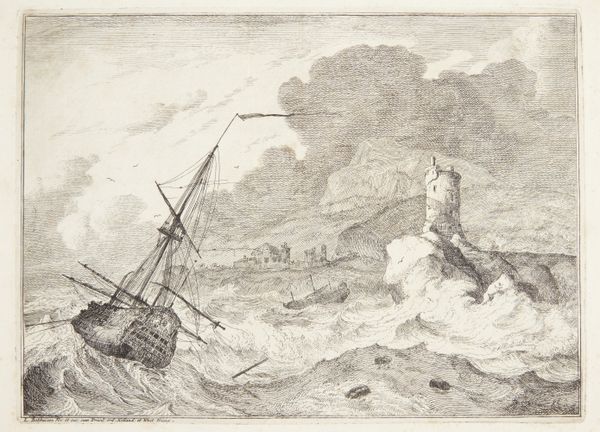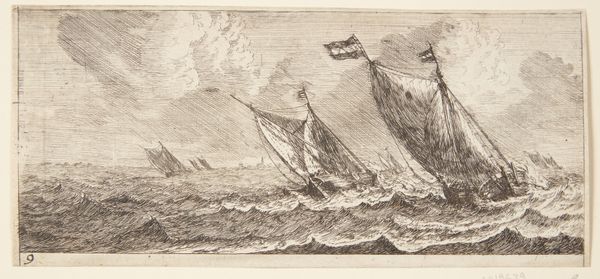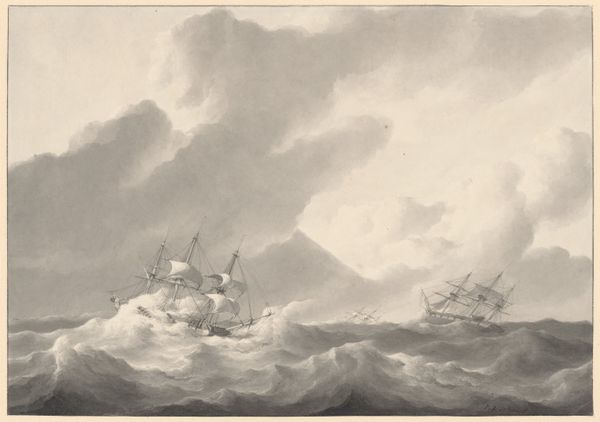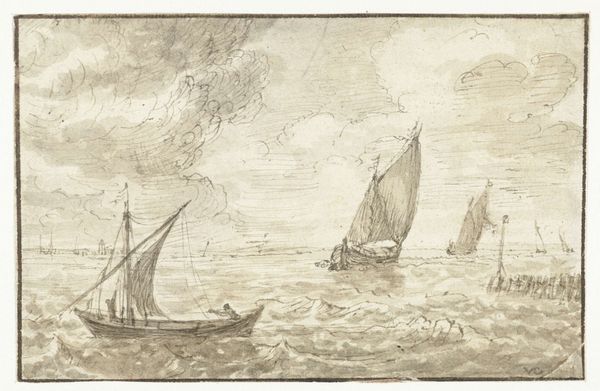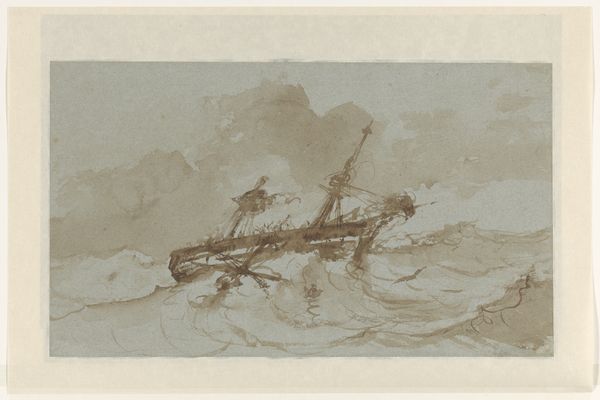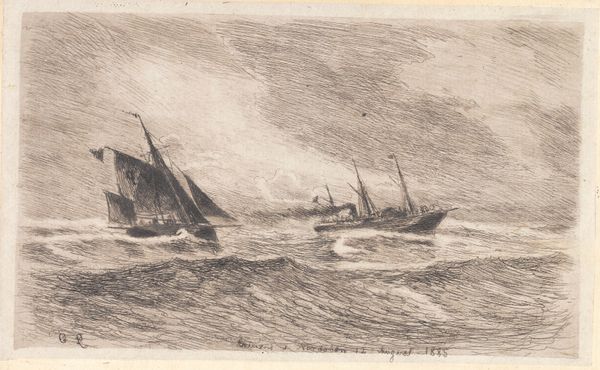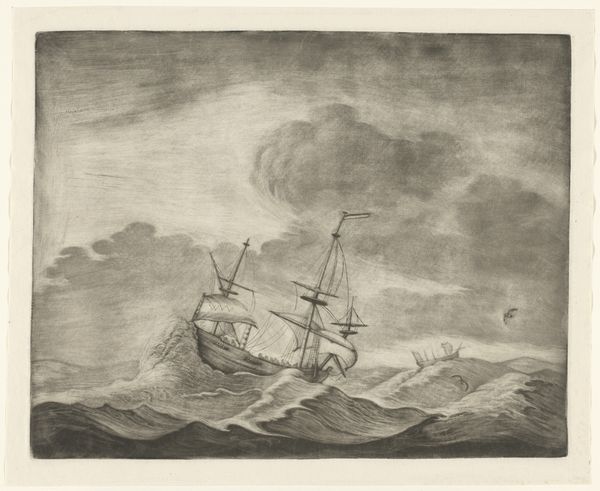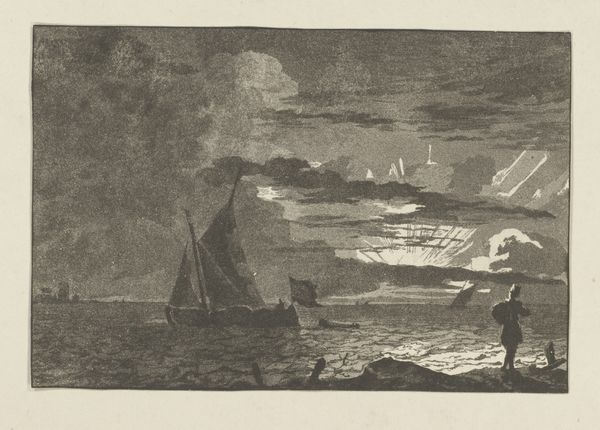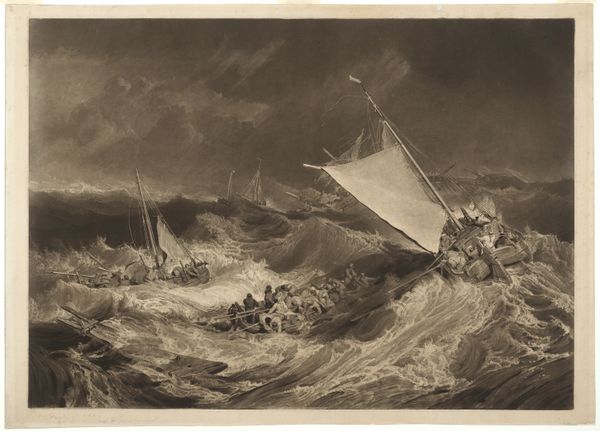
drawing, paper, ink, indian-ink
#
drawing
#
baroque
#
landscape
#
etching
#
paper
#
ink
#
indian-ink
#
watercolour illustration
Copyright: Public Domain
Curator: This arresting scene is entitled *Schiffbruch an einem Felsen*, or "Shipwreck on a Rock," attributed to Ludolf Backhuysen. The medium is Indian ink, in on paper. Editor: Well, it certainly captures the terror of being at sea in a storm! There’s this immediate feeling of…chaos. Everything's tossed about. Curator: Backhuysen was, in his time, a celebrated marine painter, particularly esteemed in the Dutch Republic. Interestingly, drawings like these often served as preparatory studies for larger paintings. Editor: Ah, that explains the...energy of it! The scene is clearly baroque in its sensibility. Is that why everything is happening all at once? Curator: Partly. It reflects the baroque fascination with dynamism and heightened drama, and also perhaps Holland’s intertwined relationship with the sea. They thrived from trade but also were exposed to its power. Consider the sociopolitical role here – a cautionary tale, maybe? Editor: A warning? Memento mori, but make it maritime? The little figures escaping on a boat in the foreground are almost swallowed by the wave crashing nearby; how insignificant we seem. Yet, the lines in the drawing, even the chaos, possess such grace. The artist is capturing the beautiful in disaster. It's rather inspiring when you think about it. Curator: Indeed, it presents nature as sublime, an experience capable of eliciting both awe and terror. Backhuysen had even witnessed maritime disasters himself. Maybe this one felt particularly personal. Editor: Art always gets more poignant when it’s infused with experience, don’t you think? Something about taking a chaotic scene of utter annihilation, but creating a compelling, elegant piece is something worth reflecting on. Curator: Absolutely. "Shipwreck on a Rock" certainly compels a second, more thoughtful look.
Comments
No comments
Be the first to comment and join the conversation on the ultimate creative platform.

